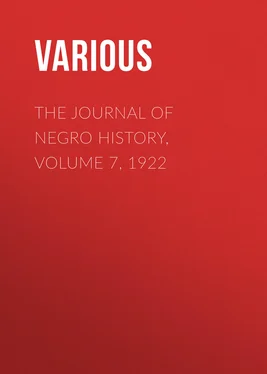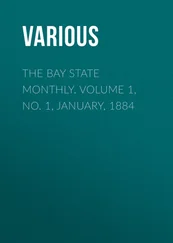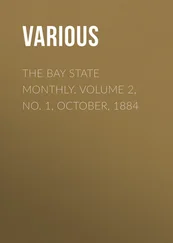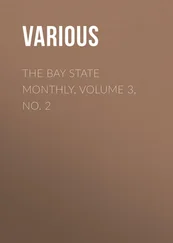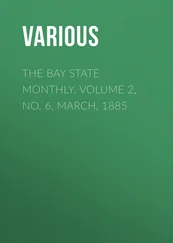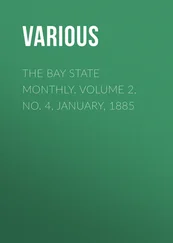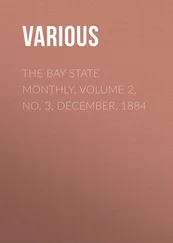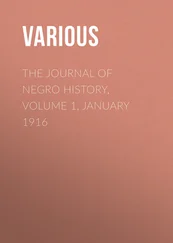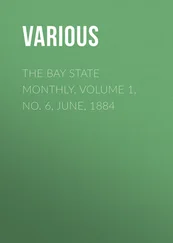Various - The Journal of Negro History, Volume 7, 1922
Здесь есть возможность читать онлайн «Various - The Journal of Negro History, Volume 7, 1922» — ознакомительный отрывок электронной книги совершенно бесплатно, а после прочтения отрывка купить полную версию. В некоторых случаях можно слушать аудио, скачать через торрент в формате fb2 и присутствует краткое содержание. Жанр: foreign_antique, periodic, История, foreign_edu, на английском языке. Описание произведения, (предисловие) а так же отзывы посетителей доступны на портале библиотеки ЛибКат.
- Название:The Journal of Negro History, Volume 7, 1922
- Автор:
- Жанр:
- Год:неизвестен
- ISBN:нет данных
- Рейтинг книги:3 / 5. Голосов: 1
-
Избранное:Добавить в избранное
- Отзывы:
-
Ваша оценка:
- 60
- 1
- 2
- 3
- 4
- 5
The Journal of Negro History, Volume 7, 1922: краткое содержание, описание и аннотация
Предлагаем к чтению аннотацию, описание, краткое содержание или предисловие (зависит от того, что написал сам автор книги «The Journal of Negro History, Volume 7, 1922»). Если вы не нашли необходимую информацию о книге — напишите в комментариях, мы постараемся отыскать её.
The Journal of Negro History, Volume 7, 1922 — читать онлайн ознакомительный отрывок
Ниже представлен текст книги, разбитый по страницам. Система сохранения места последней прочитанной страницы, позволяет с удобством читать онлайн бесплатно книгу «The Journal of Negro History, Volume 7, 1922», без необходимости каждый раз заново искать на чём Вы остановились. Поставьте закладку, и сможете в любой момент перейти на страницу, на которой закончили чтение.
Интервал:
Закладка:
The earliest teaching of the Negroes in the east-central counties of the State came as a result of the sympathetic interests of benevolent slaveholders who, living in a part of a State with a natural endowment unfavorable to the institution of slavery, failed as a whole to follow the fortunes of the slaveholders near the Atlantic Coast, and, hoping to see the ultimate extinction of the institution by gradual emancipation, gave the Negroes an opportunity for such preparation as they would need to discharge the functions of citizenship. Immediately after the War, when there was no public opinion proscribing such benevolence, sympathetic white persons privately instructed Negroes here and there. Such was the case at White Sulphur, long since known as a summer resort, attracting from afar persons of aristocratic bearing who, coming into contact with the Negro servants whom the resort required, not only proved helpful to them by way of contact, but gave them assistance in realizing limited educational aspirations. The private school in White Sulphur finally gave place to one established by the district. It had the support of the best white citizens of the community and was maintained largely by the enterprise of progressive Negroes seeking to provide for their children all facilities for education offered elsewhere. About the same time, that is, in 1866, the Freedmen's Bureau had a school in Lewisburg, under the direction of one Miss Woodford. After serving the people well for a year or two, this institution gave place to a public school. 41
In Ronceverte, where the Negro population increased more rapidly and where these persons of color made more economic progress than in the case of White Sulphur, Negro education had a better chance. After passing through the stage of such private instruction as white persons interested in the man far down felt disposed to give, an actual school was opened in the early seventies with an enrolment of thirty pupils. The first teacher was Mr. Robert Keys of Charleston, West Virginia. Mr. Keys was well prepared for that time and served there creditably for two years. Mr. Keys had the support of such well-known families as the Crumps, the Capertons, the Gees, the Petersons, the Eldridges, the Browns, the Eubanks, the Williamses and the Hayneses. There served also Miss Carr of Harrisonburg, Virginia, and Benjamin Perkins of Lewisburg, West Virginia. Mr. Robert D. Riddle was also one of the early instructors. Mr. Riddle retired from teaching several years ago, but is still living in the city of Ronceverte, where he has distinguished himself as a successful truck farmer. Some years later Rev. R. D. W. Meadows, who has for a number of years served as a missionary in West Virginia, labored as a teacher in these parts, leaving a favorable impression on the system. The school was first taught in the small one-room house privately owned. When it increased in later years, it was found necessary to divide it so as to teach a part of the school in the Negro Baptist Church until the larger building could be provided. It is now a well-graded and junior high school with many modern facilities. 42
Union, in Monroe County, was not unlike the other large settlements of this section having considerable Negro population. There was at times even as early as 1855 a healthy sentiment in favor of the improvement of the few slaves there, and this was not lost after the Civil War had ended. So general was the interest in behalf of the Negroes that this proved to be a most favorable community. Union was one of the first towns in that section to establish a public school for Negroes. At first there was some difficulty in having well prepared Negro teachers in the county itself; for one John Didell, a white man, was the first teacher of the public school. He had the support of such respectable Negroes as Julius Smalls, Andrew Bailey, Malinda Campbell, Henry Campbell, James Clair, Christopher Whitlock, and Charles Campbell. Two of the products of this school are Miss Charlotte Campbell and Bishop M. W. Clair of the Methodist Episcopal Church. 43Among those who came in later to stimulate the first efforts of the teachers were Mrs. Leota Moss Claire, now a resident of Charleston, West Virginia, and J. M. Riddle who, after having taught at Sinks Grove in Monroe county and preached for several years in various parts of West Virginia, engaged in the ministry in Ohio and later went to California, where he is now serving as a State Missionary of the Baptist church.
In Summers County, the large settlement of Negroes was at Hinton. This place had a Negro school of fifteen pupils as early as 1878, with one T. J. Trinkle as instructor. He was a man of limited education, but prepared to help those who had not made advancement in the fundamentals. What he lacked in education he made up in moral influence, and his career is still remembered as a success. The cause of education among Negroes of Hinton was fearlessly supported by E. J. Pack and C. H. Payne, once a teacher in a rural district in this county himself and later a minister and a public servant in this country and abroad. The school in Hinton began in a one-room structure rented for four months, the length of the school term. Teachers were paid at the rate of $15, $25 and $30 a month for third, second, and first grade certificates respectively. It has recently developed into a well-graded school having a junior high school running nine months, with teachers paid at the rate of a combined monthly salary of $600.
The Negro public school experienced a later development in Fayette County than in the case of the counties nearer to the eastern border of the State or nearer the Ohio River; for, unlike those parts which had a larger number of slaves than the central and northern counties, Fayette County never before the eighties had Negro groups in sufficiently large numbers to warrant an outlay in education at public expense. The beginning of Negro education in this county was consequent upon the migration of Negroes to the coal fields. Many of them were interested in education and became its best patrons. Among those were Samuel Morgan, A. W. Slaughter, J. H. Shelton, J. D. Shelton, Aaron Chiles, Thomas Chiles, Randal Booker, Thomas Bradley, Oliver Jones, Ballard Rotan, Anderson Rotan, R. J. Perkins, Aaron Calloway, Mat Jordan, Henry Robinson, S. H. Hughes, Wellington Henderson, John Carrington, James Caul, George Moss, and Pleasant Thomas.
The first school established in Fayette County was that at Montgomery, in 1879. It was opened by H. B. Rice, a pioneer teacher in Kanawha Valley who had completed his education at Hampton Institute. For three years Mr. Rice taught in one room of the home of Thomas H. Norman, an intelligent and progressive Negro who, realizing the importance of education as a leverage in the uplift of his people, early made sacrifices for the establishment of this school. The school was then taught in a shanty. Inasmuch as at the end of one year, that is, by 1883, the Negro population had rapidly increased, this uncomfortable building was very much over-crowded and the school had to be divided so that part of it could be taught in the Baptist church nearby, until it secured better quarters. Among the teachers who toiled in this district were Mrs. A. G. Payne, Mrs. Anna Banks, Misses Sadie Howell, Julia Norman, Annie Parker, M. E. Eubank, Mrs. F. D. Railey, Mr. George Cuzzins, Mrs. M. A. W. Thompson, Miss L. O. Hopkins, Miss Lizzie Meadows, Mr. J. W. Scott, Miss Rebecca I. Bullard, Miss Mattie Payne Trent, Mrs. Lola M. Lavender Mack, Miss Nellie M. Lewis, Miss Ida M. King and Mr. H. H. Railey. The last mentioned not only attained distinction as the principal of this school, but so impressed his constituents as to be elected to the West Virginia Legislature. 44
The impetus given to education at Montgomery was productive of desirable results in other towns in Fayette County. The second Negro school to be established in Fayette County was that Quinnimont in 1880. A storm of protest made the life of the teacher almost intolerable, although he was a white man. The school-house had to be guarded, but Rev. M. S. G. Abbot taught it two years. Then came Mr. R. D. Riddle, mentioned above in connection with the school at Ronceverte. 45
Читать дальшеИнтервал:
Закладка:
Похожие книги на «The Journal of Negro History, Volume 7, 1922»
Представляем Вашему вниманию похожие книги на «The Journal of Negro History, Volume 7, 1922» списком для выбора. Мы отобрали схожую по названию и смыслу литературу в надежде предоставить читателям больше вариантов отыскать новые, интересные, ещё непрочитанные произведения.
Обсуждение, отзывы о книге «The Journal of Negro History, Volume 7, 1922» и просто собственные мнения читателей. Оставьте ваши комментарии, напишите, что Вы думаете о произведении, его смысле или главных героях. Укажите что конкретно понравилось, а что нет, и почему Вы так считаете.
